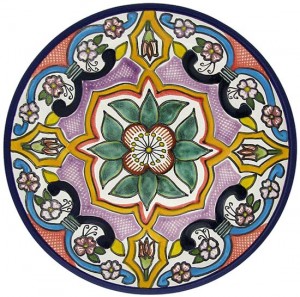 Talavera Poblana: Four Centuries of a Mexican Ceramic Tradition was an historical survey presenting the history of Mexican Talavera ceramics tin-glazed earthenware, from its Spanish roots through contemporary manifestations. The exhibition’s historical section included objects borrowed from important New York collections, the latter portion presented contemporary interpretations of this traditional medium by Mexican and foreign artists, selected from the collection of the Museo Amparo in Puebla, Mexico.
Talavera Poblana: Four Centuries of a Mexican Ceramic Tradition was an historical survey presenting the history of Mexican Talavera ceramics tin-glazed earthenware, from its Spanish roots through contemporary manifestations. The exhibition’s historical section included objects borrowed from important New York collections, the latter portion presented contemporary interpretations of this traditional medium by Mexican and foreign artists, selected from the collection of the Museo Amparo in Puebla, Mexico.
The show was curated by Margaret Connors McQuad, Assistant Curator of Ceramics and Furniture, at The Hispanic Society of America, New York and included ceramic basins, vases, bowls, drug jars, as well as sculptures of various shapes and sizes.
The early production of Talavera Poblana was primarily influenced by Old World traditions brought over by immigrant ceramists from various parts of Spain. Talavera initially referred to the city of Talavera de la Reina in the Province of Toledo, Spain. Talavera Poblana refers to the tradition of ceramic production in Puebla, Mexico with its unique style that combines motifs and surface decorations from different cultures and origins.

